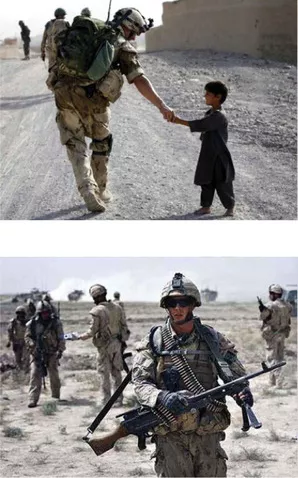
Images of War: Does seeing influence believing?
If a picture is, indeed, worth a thousand words, what impact does an image have on the public’s views of a military conflict?
A significant impact, says Peter Loewen, an associate professor of political science at U of T Mississauga and the incoming director of the School of Public Policy and Governance. He conducted two separate studies on this question, along with three of his colleagues from Ryerson University, l’Université de Montréal and the University of Michigan.
“We wanted to understand how much visual representations can change people’s opinions of a conflict,” says Loewen, the director of the Centre for the Study of the United States at the Munk School of Global Affairs. “We know that words matter, but how much do images matter?
“Most of our understanding comes from the United States, but Canadians often have different attitudes, so we want to understand if we have different logic when we go to war.”
In their initial study, Loewen and his colleagues inserted different images of Canadian military involvement in Afghanistan into surveys given to participants in the 2011 Canadian Election Survey. They were asked questions about several political issues before being asked, “The Canadian military will continue to be involved in Afghanistan for the next several years. Do you support or oppose this?”

The results showed that people who saw the peacekeeping photos were more supportive of Canadian involvement in Afghanistan (52 per cent) than those who viewed the combat photo (45 per cent), Loewen says, and the impact was greatest for those people who pay close attention to politics and care about international affairs. Support for the combat mission among this group was 15 percentage points higher if they saw the peacekeeping photo rather than the combat photo.
In 2014, they repeated the experiment as a standalone study that looked at both the past Afghanistan conflict and the ongoing intervention in Syria. In this instance, they used four peacekeeping photos and four conflict photos. Respondents saw no photo, one peacekeeping shot or one combat photo.
Support for participation in the fight against ISIS in Syria was higher (68 per cent) among those who saw the peacekeeping photo than those who viewed the combat photo (62 per cent) or no photo (62 per cent). For those who follow international affairs closely, seeing the peacekeeping photo increased their support for the Syrian mission by 10 percentage points.
“This study is important for three reasons,” says Loewen. “It confirms that images matter generally, and it shows that for Canadians, there is a distinction between military engagement in civil development and participation in war.
“It also demonstrates that people’s preferences aren’t stable. They can change based on how they think about the issue, so politics matters. Our willingness to support our engagements around the world depends somewhat on how those engagements are framed.”
